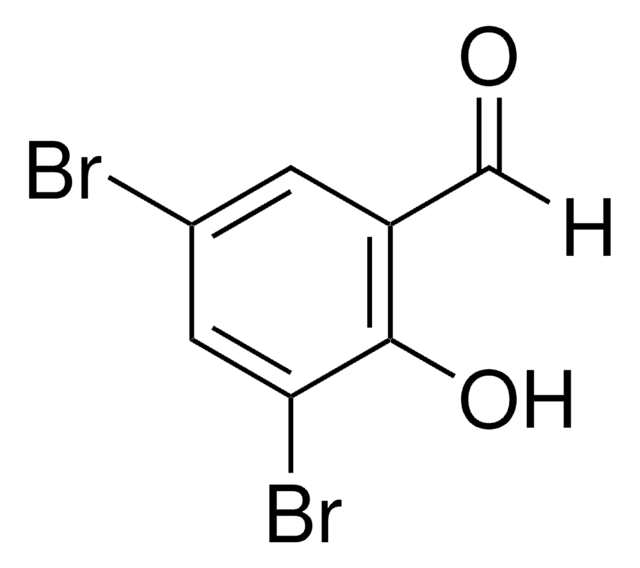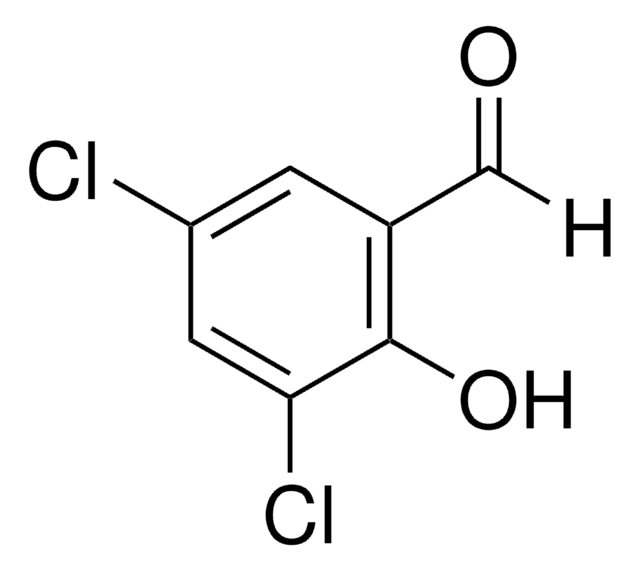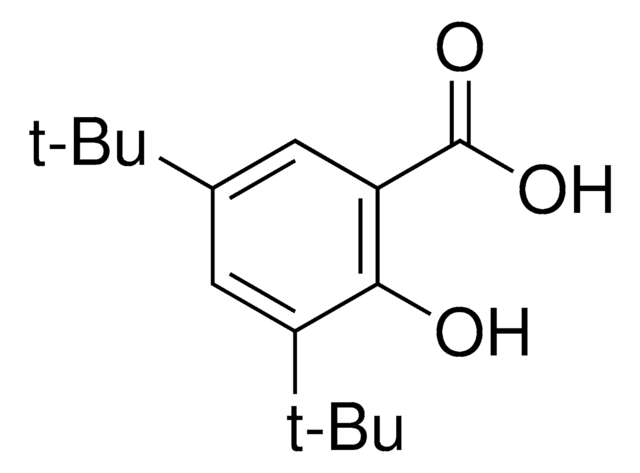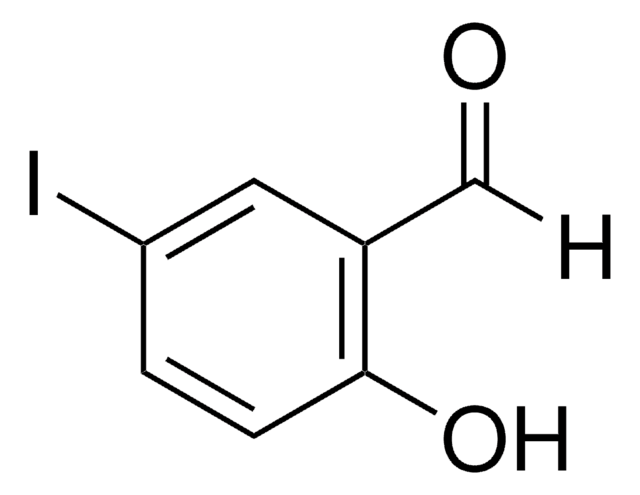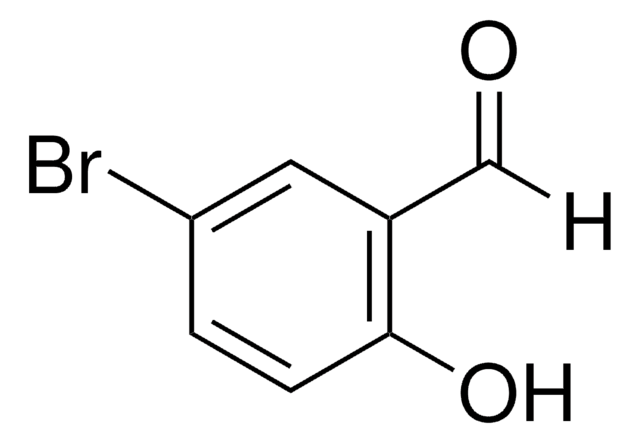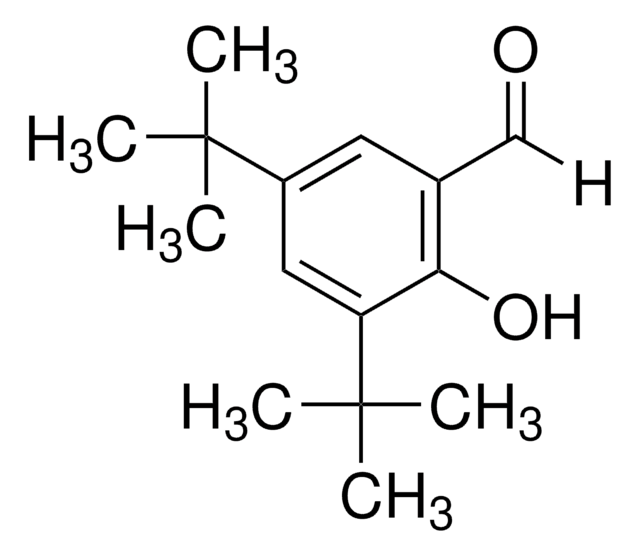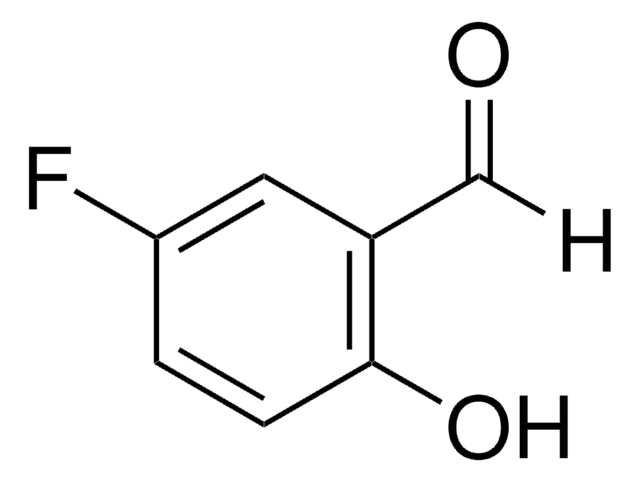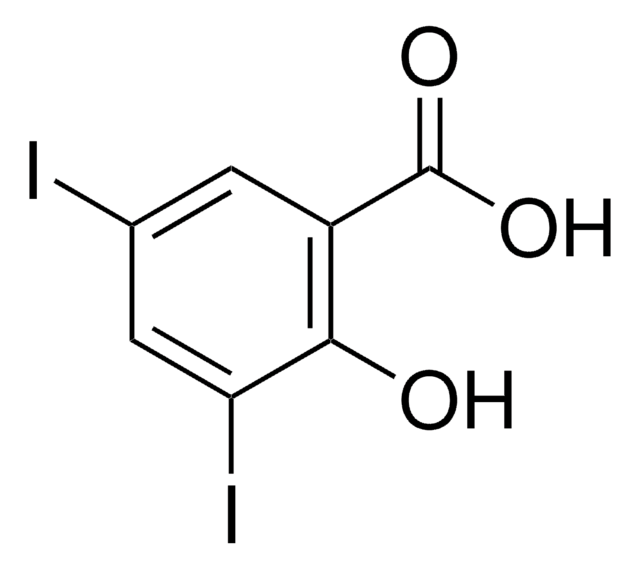추천 제품
Quality Level
분석
97%
양식
solid
mp
109-110 °C (lit.)
작용기
aldehyde
iodo
SMILES string
Oc1c(I)cc(I)cc1C=O
InChI
1S/C7H4I2O2/c8-5-1-4(3-10)7(11)6(9)2-5/h1-3,11H
InChI key
MYWSBJKVOUZCIA-UHFFFAOYSA-N
애플리케이션
3,5-Diiodosalicylaldehyde has been used in the synthesis of:
- new Schiff bases, (2,4-diiodo-6-[(2-morpholin-4-yl-ethylimino)-methyl]-phenol and 2,4-diiodo-6-[(3-morpholin-4-yl-propylimino)-methyl]-phenol)
- new tridentate ligand, [(2-hydroxy-3,5-diiodo-benzylidene)-amino]-acetic acid (HDBA)
- 3-bromo-N′-(2-hydroxy-3,5-diiodobenzylidene)benzohydrazide monohydrate
신호어
Warning
유해 및 위험 성명서
Hazard Classifications
Eye Irrit. 2 - Skin Irrit. 2 - STOT SE 3
표적 기관
Respiratory system
Storage Class Code
11 - Combustible Solids
WGK
WGK 3
Flash Point (°F)
Not applicable
Flash Point (°C)
Not applicable
개인 보호 장비
dust mask type N95 (US), Eyeshields, Gloves
Synthesis and antibacterial activities of copper (II) with [(2-hydroxy-3, 5-diiodo-benzylidene)-amino]-acetic acid.
Xu S-P, et al.
Journal of Coordination Chemistry, 63(19), 3463-3470 (2010)
Ganesan Jeya Shree et al.
Spectrochimica acta. Part A, Molecular and biomolecular spectroscopy, 226, 117613-117613 (2019-10-14)
In this work, we designed a novel Schiff-base probe from the condensation reaction of 3,5-diiodosalicylaldehyde with isoniazid. Treatment of the sensor molecule with different metal ions like K+, Ba2+, Ca2+, Mg2+, Fe2+, Mn2+, Co2+, Cu2+, Cd2+, Ni2+, Hg2+, Zn2+, Pb2+
Synthesis and antibacterial activities of metal (II) complexes with Schiff bases derived from 3, 5-diiodosalicylaldehyde.
Xu S-P, et al.
Journal of Coordination Chemistry, 62(12), 2048-2057 (2009)
Jing-Heng Ning et al.
Acta crystallographica. Section E, Structure reports online, 65(Pt 4), o905-o906 (2009-01-01)
Crystals of the title compound, C(14)H(9)BrI(2)N(2)O(2)·H(2)O, were obtained from a condensation reaction of 3-bromo-benzohydrazide with 3,5-diiodo-salicylaldehyde. The Schiff base mol-ecule assumes an E configuration with respect to the C=N bond, and the dihedral angle between the two benzene rings is
Yang Pan et al.
Chemosphere, 144, 2312-2320 (2015-11-26)
During drinking water disinfection, iodinated disinfection byproducts (I-DBPs) can be generated through reactions between iodide, disinfectants, and natural organic matter. Drinking water I-DBPs have been increasingly attracting attention as emerging organic pollutants as a result of their significantly higher toxicity
자사의 과학자팀은 생명 과학, 재료 과학, 화학 합성, 크로마토그래피, 분석 및 기타 많은 영역을 포함한 모든 과학 분야에 경험이 있습니다..
고객지원팀으로 연락바랍니다.